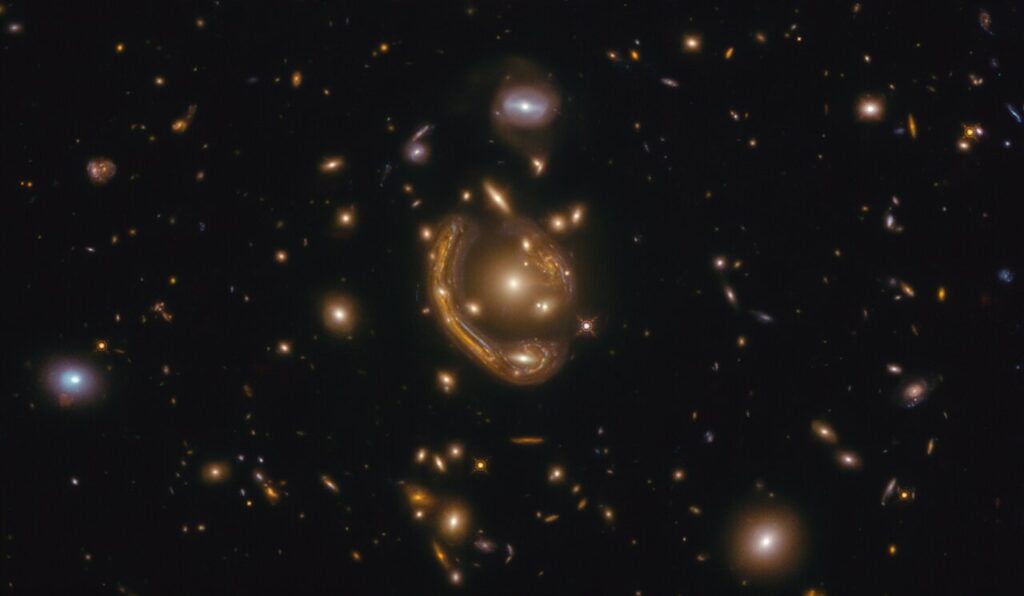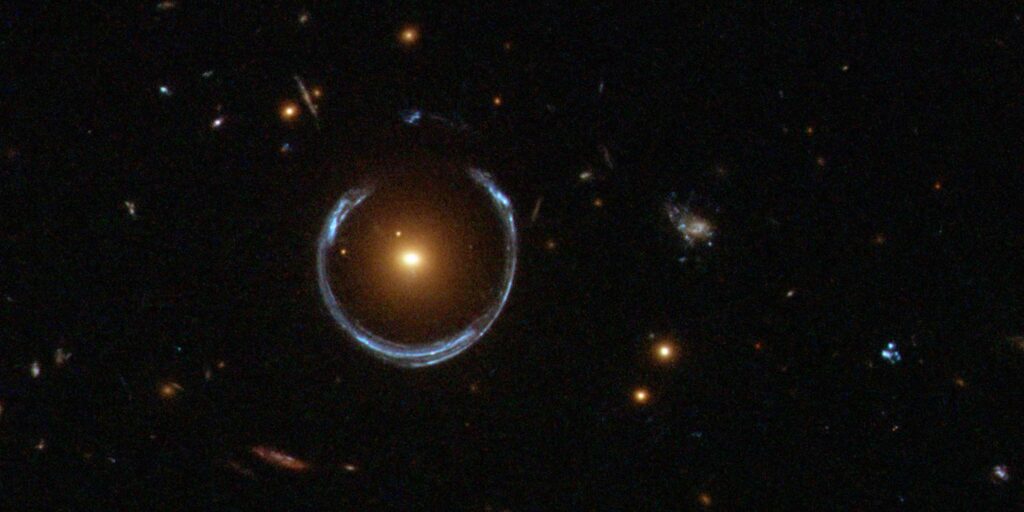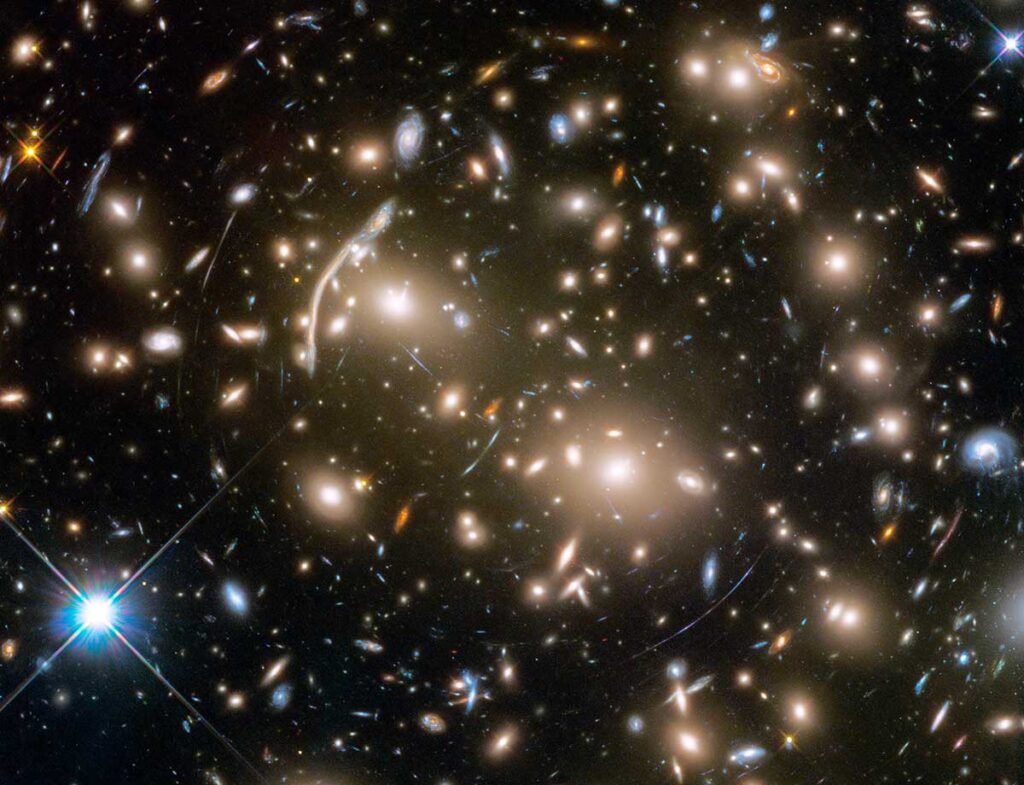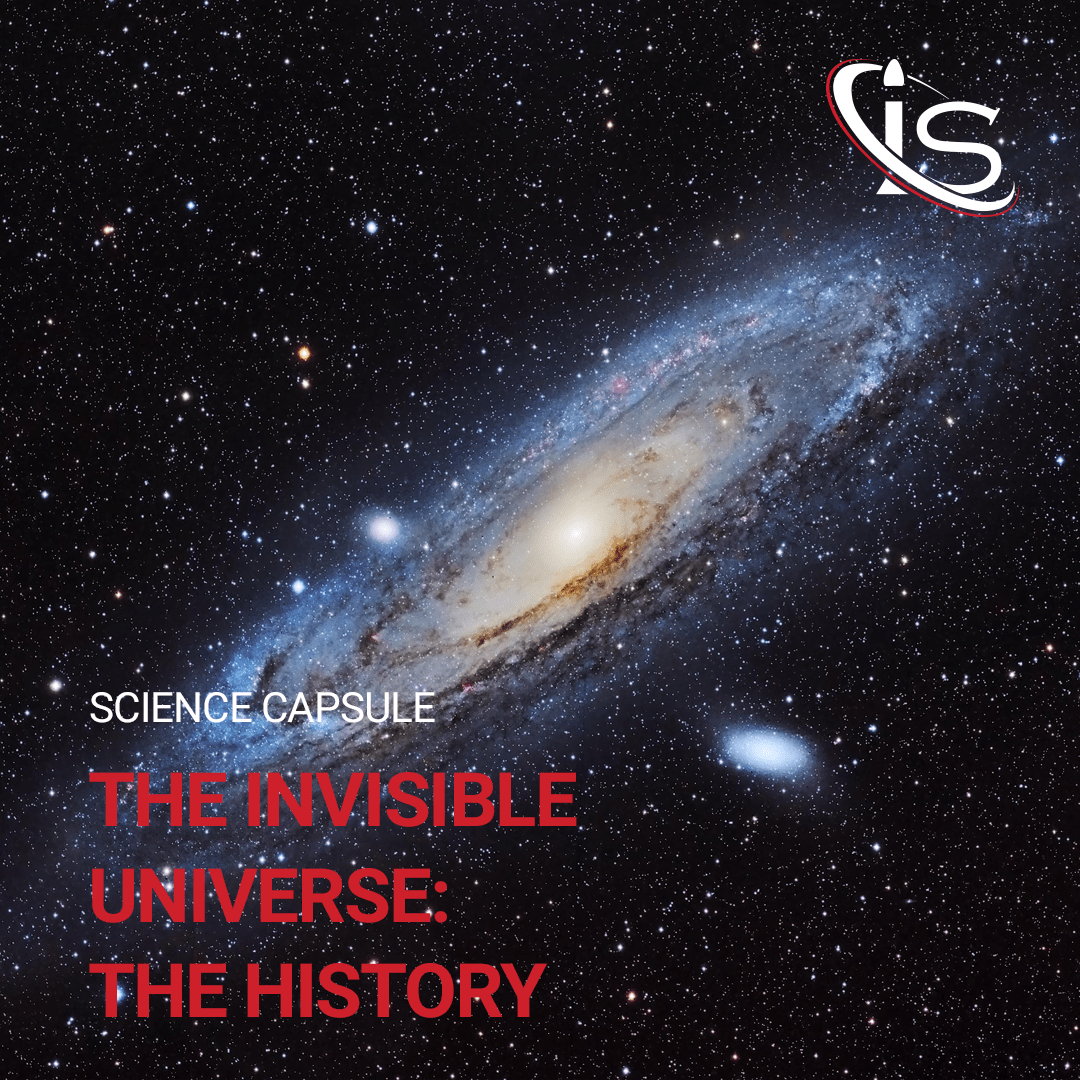In a recent article we discussed the effects of space dust on our observations of the cosmos. However, that is far from the only factor to consider when analyzing images from space. Today, we look into another topic that astronomers and satellite operators alike have to take into account: gravitational lensing. Much like how planets and other celestial bodies affect the paths of objects in space, the same concept applies to the path traveled by light. And while the nature of light may initially suggest the effects would be different, that is not the case. Not entirely, at least. So, get comfortable and ready yourself for learning more about how we observe the deep confines of space from Earth.

What Is Gravitational Lensing?
Before diving deeper, I should address the elephant in the room. Yes, this topic is tied to the complex one of general relativity. However, that is not an area we will meander into today. Trust me, since it is not strictly necessary, it would only make this capsule more complex than it needs to be. Don’t get me wrong, general relativity is fascinating … but it is also very hard to understand. And that is coming from someone whose final physics class in college was simply called “General Relativity”. Though, feel free to check out the article we dedicated to that topic in our capsule on how time passes on satellites. Just be ready for some heavy math. But I digress.
But with that out of the way, it is time to move on to answering today’s main question. What is gravitational lensing? And the basic definition is this. When there is a sufficiently massive object — i.e. a galaxy, galaxy cluster, etc. — light passing by it will have it path bent by its gravitational waves. And much like space dust, this can be both an obstacle and a boon to observing faraway objects. How this could be an obstacle is a little more straightforward, so let’s start there.
A Warped Perspective
While it is not fair to say that light being bent by a massive object is inherently going to make it harder to detect, this lensing effect does affect the way it is being detected. Mainly, the object’s shape might appear distorted and/or out of proportion compared to the original. And, certainly, that is something that needs to be taken into account by the observer. However, this is where the benefits of gravitational lensing really start to shine through. So, let’s take a look at how this phenomenon can help reveal some of the most remote parts of the Universe to us.

The Different Types of Gravitational Lensing
The most basic case of gravitational lensing occurs when light is bent around a single concentration of matter. This could be the core of a galaxy or even just a singular star — although the latter will be discussed more later on. Because the mass is focused in one spot, the light passing by it will only (for the most part) be affected by this concentration of matter. The result to said passing light is similar to that of a magnifying lens.
Einstein Rings
To put this in more concrete terms, if a faraway galaxy were being observed behind the core of a closer one, its light would be magnified for the observer. However, the bending of light around such a core will often produce multiple images of the farther galaxy. That is, until the observer, core of the closer galaxy, and the faraway one all align to create perfect symmetry. When that happens the multiple images that were observed before “merge” into a single circle of light. This phenomenon is known as an Einstein Ring and is one of the ways that gravitational lensing can help detect faraway objects. Although, it is worth pointing out that, as is the case in the picture below, Einstein Rings are not always full rings.

Before moving on to what is effectively a different type of gravitational lensing, it is important to discuss something we briefly touched on before. The lensing that occurs around a single star. While the mass in question here is much less than that of a galaxy’s core, the effects are somewhat similar. Albeit to a much lesser degree. Stars can still act as a gravitational lens, especially for more distant ones. Once again, the effect of a star passing in front of the line of an observer’s line of view to another is that of the latter’s light being magnified. However, due to the smaller scale of this particular lensing instance, this phenomenon is known as gravitational microlensing. But now, it is time to dive into a more complex scenario.
Galaxy Clusters and Gravitational Lensing
This second type of gravitational lensing does share some similarities with what we just discussed. However, it also has many unique traits to call its own. The first major distinction comes from what the objects doing the lensing are. Unlike the examples we studied prior, the ones we are going to look at now will deal with galaxy clusters. And, due to a cluster containing more than a single galaxy — would not be much of a cluster otherwise — the concentration of matter here is much different to what we saw before.
Because there is no single concentrated center of mass, the effects of gravitational lensing are not quite the same as the previous examples. Instead of perfect symmetry producing an Einstein Ring, the various concentrations of matter will lead to “lensed arcs”. The image below, captured by the one and only Hubble, has these blue arcs interspersed and perfectly showcased.

While this is not always going to be the case, lensed arcs are generally the most common shapes produced by this phenomenon. The other possible shapes include crosses, rings, and more. However, there is even more that this phenomenon can help us observe than the light from faraway galaxies. In fact, gravitational lensing in a cluster provides invaluable information about the cluster, itself, as well.
Where Matter Lies
The main piece of information that we can gather about a galaxy cluster from gravitational lensing is its mass distribution. This is almost never uniform and is also the main factor determining how light will be magnified in the region. But the really interesting discovery that studying gravitational lensing leads to is that light is bent in ways not congruent with the matter visible in the cluster. So, something else must be at play here. And that something is the wonderfully mysterious substance we all know as dark matter.
While there is no time — or need — to go into an in-depth discussion on this topic, it is crucial to bring it up here. Without the presence of dark matter, the location and shape of these lensed arcs (or other shapes) could not be explained. Similarly, these shapes, themselves, can be used as a great indicator of the matter (both visible and dark) comprising the cluster. Therefore, this phenomenon enables us to study the object whose light is getting magnified and the cluster magnifying it, simultaneously. Not only that, but we can only truly get the full picture by studying both together. And that is without mentioning that clusters also allow for the objects behind them to be more easily observed. After all, the magnifying lens effect is still very much in play.
And with that, we have come to the end of another article. I sincerely hope you enjoyed learning a little more about how we observe space. Let us know what the next topic you would like us to cover is. “See you” all next time, right here, at impulso.space.





